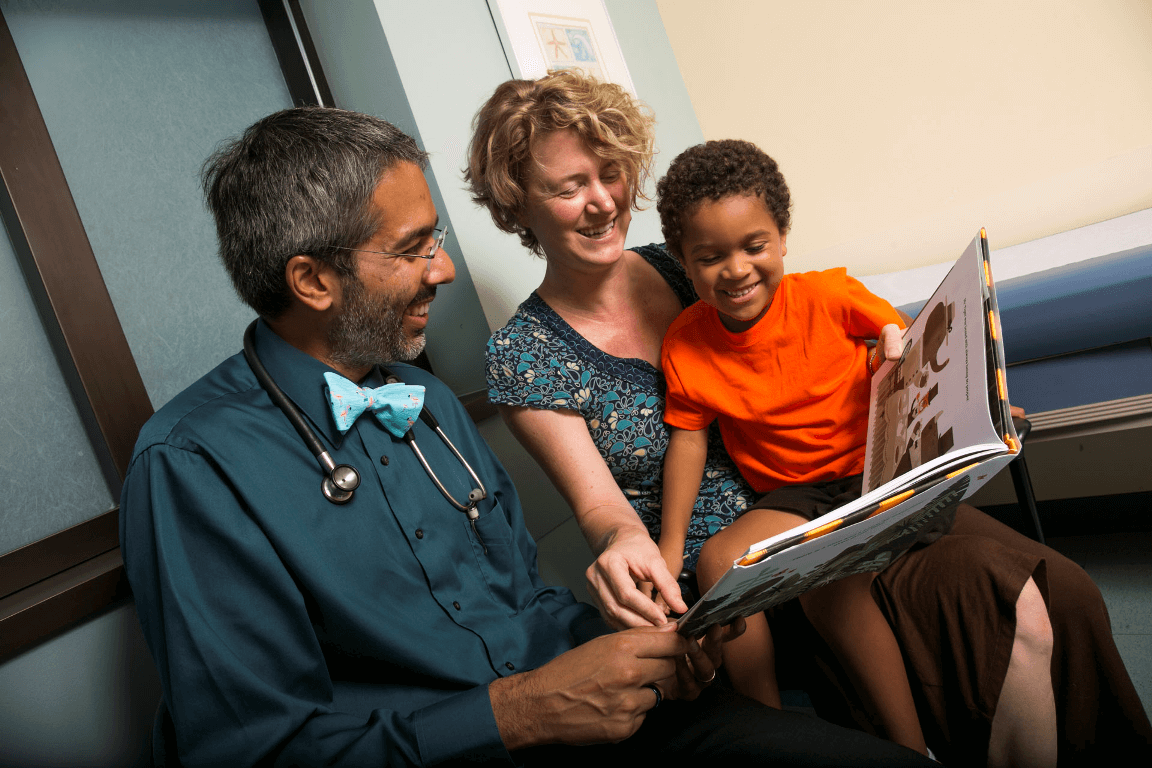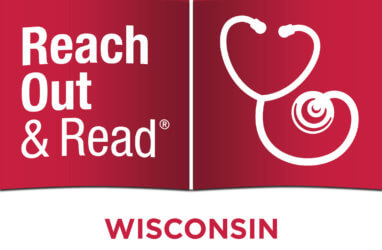As a project coordinator who has visited more than 90 Reach Out and Read (ROR) clinics in Wisconsin, I am always impressed by our clinics’ commitment to early literacy and their fidelity to the ROR model. Our team is grateful to the more than 200 clinics in the state, who on top of their already numerous responsibilities have embraced ROR and are committed to the success of their youngest patients.
After completing these visits, I have noticed there are a few things that high performing clinics do. Some of these are obvious, like having adequate funding or staff who are engaged. But what separates the highest performing clinics? Below are four things I have consistently seen successful clinics doing.
Leveraging their local community
If you attended our annual meeting last year, this was a key message. Even in the smallest communities clinics can work with local groups and town residents to help the clinic’s ROR program thrive. Groups and places of business that have worked with ROR Wisconsin programs in the past include:
- Public libraries
- Technical colleges
- National Honor Society clubs
- Literacy councils
- Lions clubs
- Rotary groups
Even if your clinic does not have a library or adult literacy organization in town, promoting the nearest option is still a good idea. Check out Wisconsin Literacy’s map to find an adult literacy program near you.
Collaborating with community organizations and individuals is key to building strategic partnerships. It is likely you will find the work your clinic is doing through ROR accomplishes a goal that many community members share; giving every child a good start and providing tools they will need to succeed in the future.
Working with community members also creates buy-in for your ROR program. Collaboration will build awareness in the community for your clinic’s positive work surrounding early literacy and school readiness.
Talking about ROR and its impact
Clinics with successful ROR programs frequently talk about the program, reading aloud and the positive impact on brain and child development. Whether during provider or medical assistant meetings, through internal or external newsletters, the local newspaper or on social media, successful clinics share their ROR story and the impact it has on local children and families.

A few examples:
- Monroe clinics showcased Reach Out and Read in their Summer 2017 Health Smart newsletter on the front page and with a full page article.
- Northlakes clinics in Northern Wisconsin promoted their commitment to literacy through an article their AmeriCorp volunteer wrote, which highlighted their ROR program
- Clinicians read aloud during library story time
- Even the most experienced ROR clinics benefit from talking about ROR at staff meetings
- For data regarding statewide impact, visit our website homepage
ROR is part of the clinic’s routine
The obvious answer here is eliminating workflow issues. In order for a ROR program to work well, it has to be kept simple. Follow these tips to avoid common workflow issues:
- Store books near exam rooms or nurse’s station
- When possible, do not keep books in a locked office or cabinet
- If providers are forgetting to give the book or talk to families about reading aloud, add it as a SmartPhrase in Epic
- If your clinic does not use an electronic medical record system, place the book outside the exam room in a clear plastic bag or install small baskets outside the door
- When your book distribution is low, use a tracking sheet and tally it more regularly. Instead of just counting once every six months, count weekly or monthly (depending on patient volume). It will be easier to identify problems, if tallies are counted more frequently.
Engaging as many of the clinic staff as possible
At every clinic there will always be certain people who are champions of early literacy and ROR. However, clinics that are successful and get the most out of the program engage a wide variety of staff. A few ideas to get more staff involved:
- When ordering books ask the medical providers which books they enjoy or their patients seem to enjoy.
- If your clinic is collecting gently-used books, have a drop-off point at the reception desk and ask the staff there to sort the books, using ROR guidelines.
- Some clinic’s reception staff help by creating the literacy-rich environment in the waiting room or by keeping a literacy bulletin board updated.
- Keep literacy stickers at the reception desk for children to get after their visits.
- Ask building maintenance to build shelving units for your literacy-rich environment, like the clinic in Minong did.
- Ask volunteers to build a Little Free Library like UW Health Oregon did this past spring.

Sauk Prairie Healthcare Lodi Clinic waiting room which the reception staff created and helps maintain What does your clinic do to make your ROR program successful? Share your tips in the comment section below.

